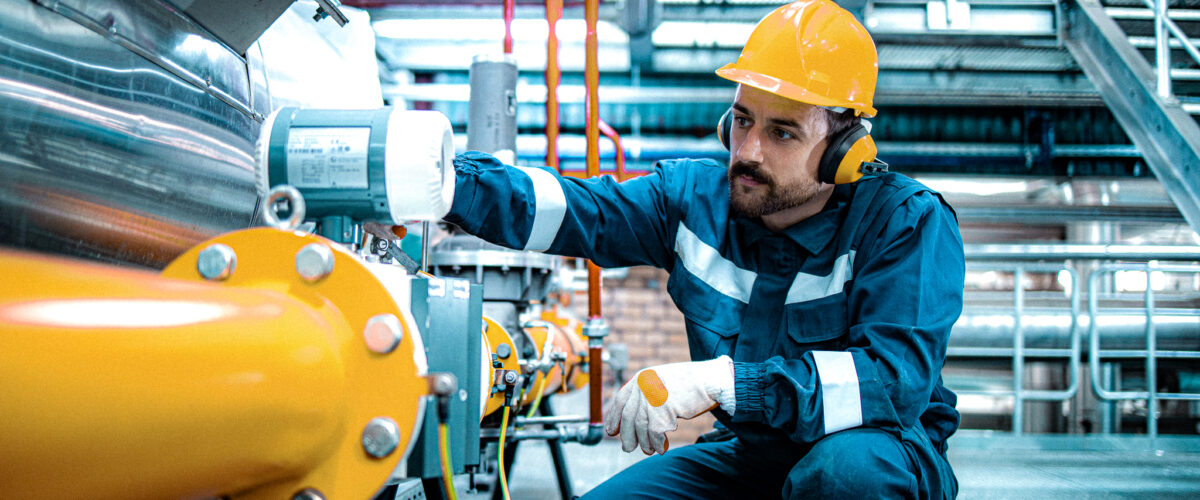What to Expect During Gas Detection System Commissioning
Before your gas detection system can protect people and equipment, it needs to be tested, calibrated, and verified. That process is called gas detection commissioning.
Commissioning confirms that gas detectors, alarms, relays, and building automation systems all work together the way they’re supposed to. Without it, a system might appear functional but fail to respond when it matters most.
Step-by-Step Gas Detection Commissioning Process
1. Pre-Commissioning Planning
Commissioning starts with a review of the plans and the system’s intended sequence of operations. This includes examining drawings, identifying all gas hazards, and confirming how the system is expected to interact with other devices like fans, alarms, or HVAC controls.
A clear plan helps coordinate testing and ensures everyone involved knows how the system is supposed to behave.
2. System Installation Review
Before testing begins, the installation is double-checked. Technicians verify that sensors are in the correct locations, that wiring is complete, and that everything matches the approved design.
Catching errors at this stage prevents delays and ensures sensors are placed for accurate detection.
3. Functional and Communication Testing
Once powered up, each part of the gas detection system is tested to confirm it’s working. That includes sensors, alarms, relays, and controllers.
Technicians also check communication between the gas detection equipment and connected systems like BAS platforms, ventilation controls, or equipment being shut down. This confirms that alerts and shutdown signals reach their targets when needed.
4. Alarm Verification and Calibration
Sensors are exposed to certified calibration gas to confirm that they detect the correct concentration and trigger the right alarms. If required, technicians can simulate different alarm levels to make sure the full sequence of operations works from start to finish.
This step reduces false alarms, ensures accuracy, and verifies that the system performs correctly under real-world conditions.
5. Documentation and Sign-Off
The process of calibration and testing is recorded. That documentation proves the system has been verified and adjusted as needed to meet code and operational requirements.
Auditors often require these records, which protect your team if issues arise. Once approved, the system is ready to use.
6. Staff Training and Handover
Commissioning always includes operator-level training. Technicians show facility personnel how the system works, what each alarm means, and what actions to take during a gas event.
Training includes routine checks for damage or outage, basic reading of displays, and how to escalate concerns. This makes sure your team understands how to keep the system operational after the commissioning team leaves.
Why Gas Detection Commissioning Matters
Commissioning is how you prove that your gas detection system works, not just in theory, but under real world conditions.
Hawk has visited sites where detectors were installed years earlier, but alarms and fan relays were never connected. Since nothing ever triggered, the system appeared fine. In reality, dangerous leaks would have gone completely unnoticed.
Proper commissioning prevents this by identifying problems like miswired relays, uncalibrated sensors, and incomplete programming. It also ensures that your gas detection system meets regulatory requirements and passes inspection.
Codes vary widely, but most require that systems are tested, documented, and compliant with applicable standards. Hawk follows commissioning best practices that satisfy OSHA, NFPA, or other local AHJs without getting bogged down in unnecessary paperwork.
FAQs
What happens if you skip commissioning?
The system may appear to work, but in an emergency, it could do nothing. Without commissioning, alarms may not trigger, fans might not activate, and sensors might be inaccurate or offline.
Is commissioning required by code?
The specific code depends on your facility type and location, but most gas detection system installations are subject to fire marshal or AHJ approval. Commissioning provides the documentation and test results needed to meet those expectations.
Who performs the commissioning, and how long does it take?
Hawk technicians lead the commissioning process and coordinate with any other trades involved in the install.
- Small systems take under four hours.
- Mid-sized projects usually require a day or two.
- Complex systems may need phased testing over several weeks.
Secure Your Facility with Certified Gas Detection Commissioning
A gas detection system isn’t finished when it’s installed. It’s finished when it’s commissioned.
Gas detection commissioning is what makes your system reliable, compliant, and ready for real emergencies. It ensures that sensors are accurate, alerts are functional, and your staff knows how to respond.
Hawk Equipment Services provides certified commissioning, complete documentation, and hands-on training to ensure your system does what it was designed to do.
Contact ustoday to schedule gas detection commissioning for your facility.

